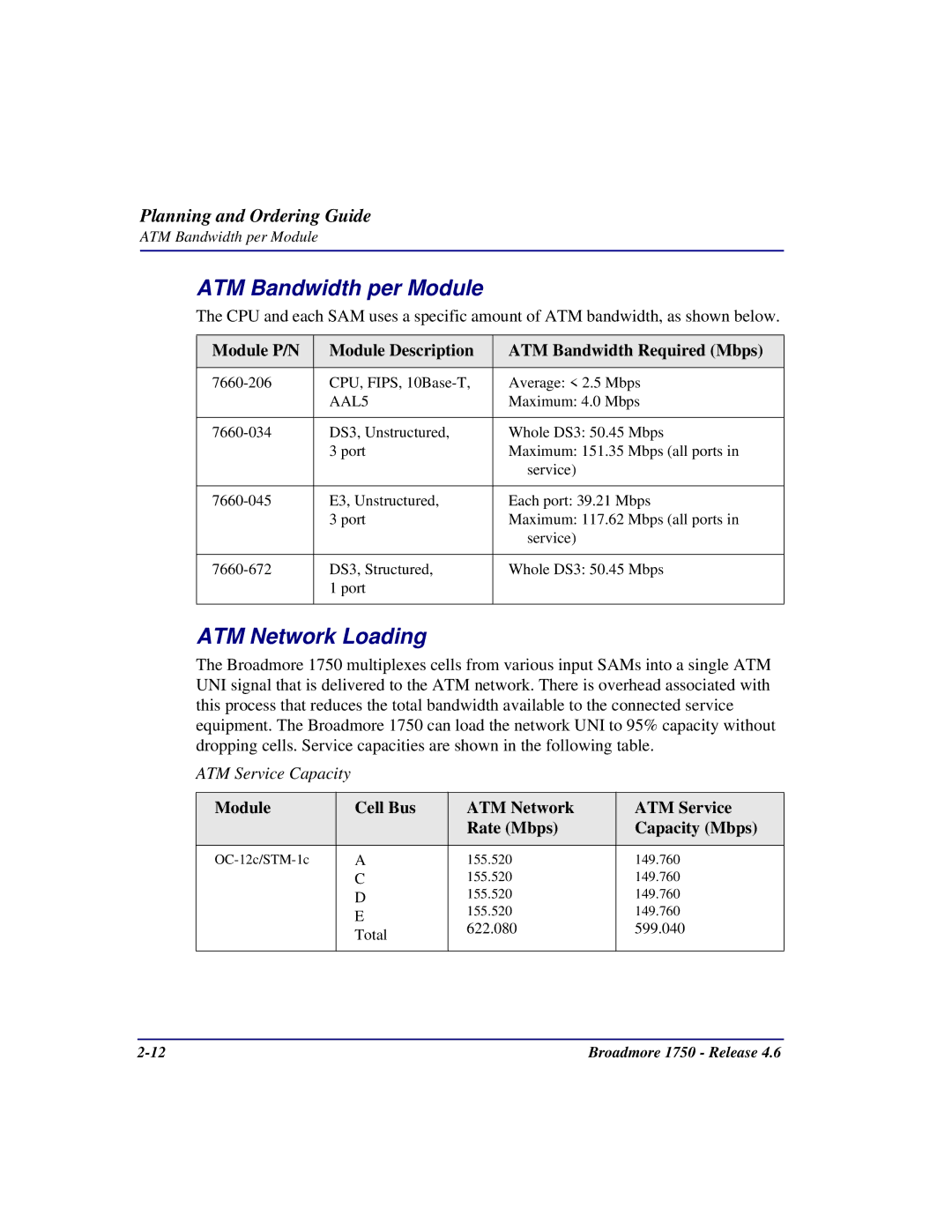
Planning and Ordering Guide
ATM Bandwidth per Module
ATM Bandwidth per Module
The CPU and each SAM uses a specific amount of ATM bandwidth, as shown below.
Module P/N | Module Description | ATM Bandwidth Required (Mbps) |
|
|
|
CPU, FIPS, | Average: < 2.5 Mbps | |
| AAL5 | Maximum: 4.0 Mbps |
|
|
|
DS3, Unstructured, | Whole DS3: 50.45 Mbps | |
| 3 port | Maximum: 151.35 Mbps (all ports in |
|
| service) |
|
|
|
E3, Unstructured, | Each port: 39.21 Mbps | |
| 3 port | Maximum: 117.62 Mbps (all ports in |
|
| service) |
|
|
|
DS3, Structured, | Whole DS3: 50.45 Mbps | |
| 1 port |
|
|
|
|
ATM Network Loading
The Broadmore 1750 multiplexes cells from various input SAMs into a single ATM UNI signal that is delivered to the ATM network. There is overhead associated with this process that reduces the total bandwidth available to the connected service equipment. The Broadmore 1750 can load the network UNI to 95% capacity without dropping cells. Service capacities are shown in the following table.
ATM Service Capacity
Module | Cell Bus | ATM Network | ATM Service |
|
| Rate (Mbps) | Capacity (Mbps) |
|
|
|
|
A | 155.520 | 149.760 | |
| C | 155.520 | 149.760 |
| D | 155.520 | 149.760 |
| E | 155.520 | 149.760 |
| Total | 622.080 | 599.040 |
|
|
| |
|
|
|
|
Broadmore 1750 - Release 4.6 |
